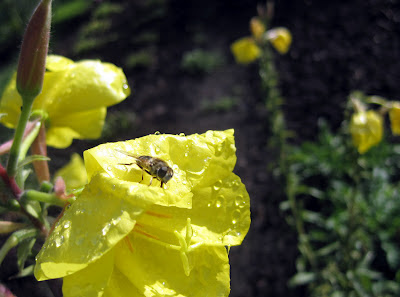Still plenty to eat - peas and beans, potatoes, carrots, cabbage, tomatoes, rocket, herbs - and fruit - raspberries, blackberries and the first plums and grapes.
Looking ahead I've been sowing mizuna, leaf beet, Chinese mustard and spring cabbage. And in the flower department foxgloves and larkspur.
These days, as you may have gathered, I'm more and more interested in making sure the plot is of use to wildlife, so I'm devoting more space to flowers for our bees and butterflies.
These ones are new this year:
Aster Frikartii Monch
Catananche Coerulea (Cupid's Dart) - grown from seed and just starting to flower.
Scabiosa Beaujolais Bonnets - also grown from seed and just starting to flower.








































